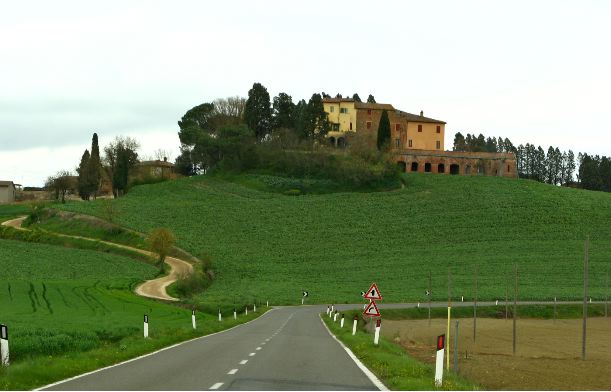To go Back at any time,
use Browser's "Previous Page"
The roofless, ruined Abbey of San Galgano and the nearby, intact Chapel of San Galgano hold an interesting story. Cistercian monks began work on the abbey in 1218 just a short distance from the Merse River and, not by coincidence, close to the existing chapel. In this photo of the abbey church only a little marble veneer remains on the facade:
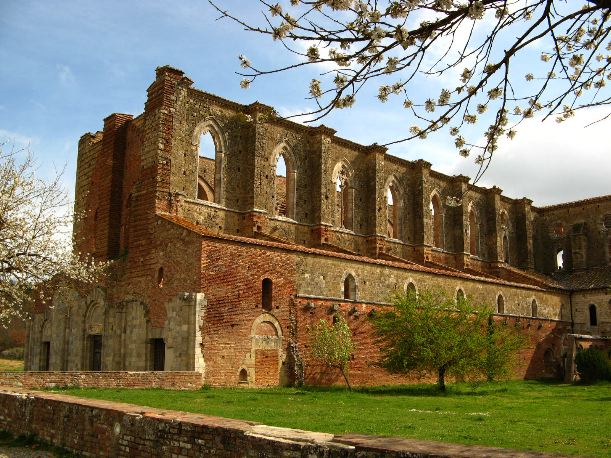
Having visited the ruins of four Cistercian abbeys in the UK, we were eager to compare them to San Galgano. They were all magnificent buildings in their time and still are as ruins:
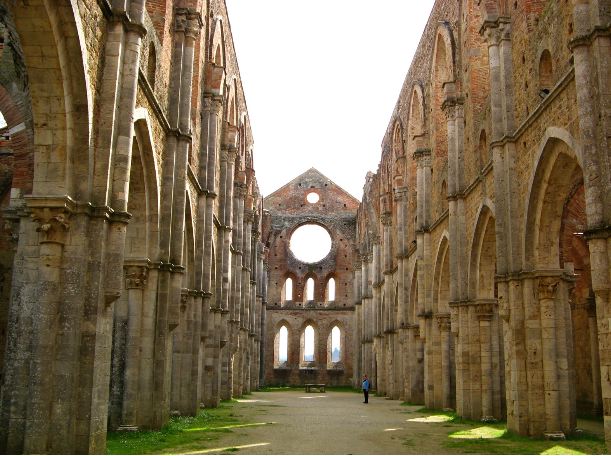
Unlike the closure of the abbeys brought on by Henry VIII, San Galgano’s decline was precipitated first by famine in 1329 and then by Bubonic plague in 1348.
The structure itself began to succumb in the 16th century, after the lead roofing was removed and sold.
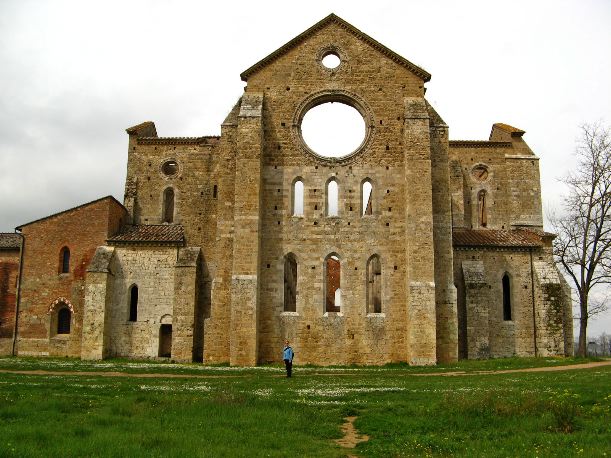
This last photo of the abbey shows what remains of the cloister:
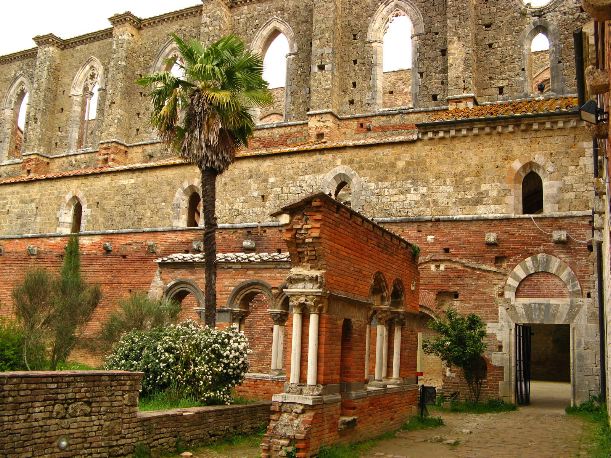
The palm tree may be a late arrival.
The Chapel of San Galgano was built at the end of the 12th century in honor of Galgano Guidotti, who had lived on the hill nearby as a hermit from 1148 until his death in 1181. He was canonized in 1185.
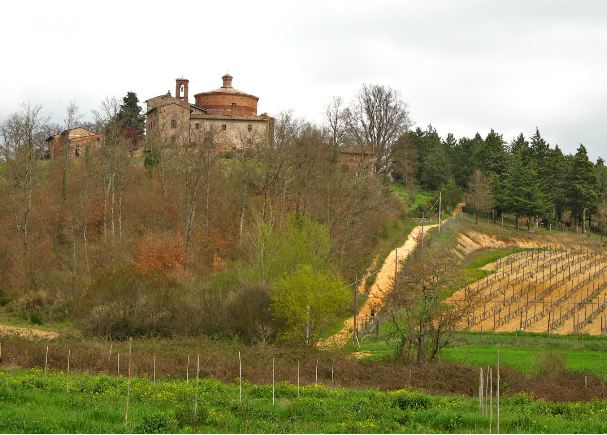
It was the existence of this chapel and its popularity that brought the Cistercians here in the first place.
The Chapel is circular with a hemispherical vault; its walls and ceiling alternate white stone with terracotta. However, in the middle of the floor what catches the visitor’s eye is Galgano’s sword:
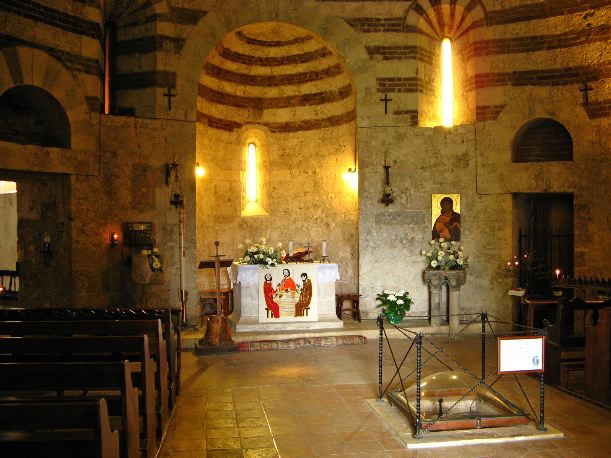
Galgano was a 12th century Tuscan nobleman who had a conversion experience, renouncing the material world as well as the arts of war to become a hermit. To symbolize his rejection of war, he is said to have plunged his sword into the rock, which miraculously “parted like butter,” leaving only the exposed hilt and an inch or two of blade to form the shape of the Cross. It is now under a transparent cover:
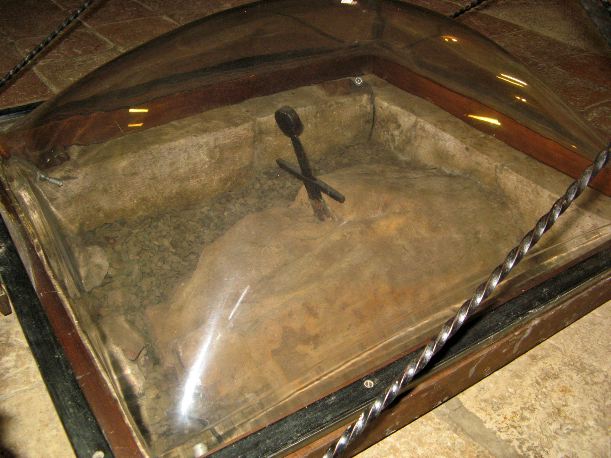
Suggestive of King Arthur, you say? Well, at least one well-known historian believes that the story of St. Galgano and his sword was the origin of the myth of King Arthur and Excalibur, embellished by medieval troubadours as it spread from Tuscany.
Upon exiting the chapel, we enjoyed the striking scene framed by the doorway:
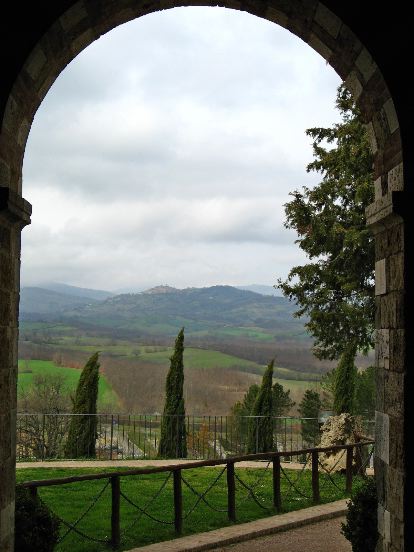
We heard while at the abbey that there is a trail between the abbey and the closest town, Monticiano. As it was a great day for a walk, we searched for directions as we drove through Monticiano and found them! So, off we went, expecting to reach the abbey in less than 2 miles. We passed some attractive homesteads, including this one with its own race track:
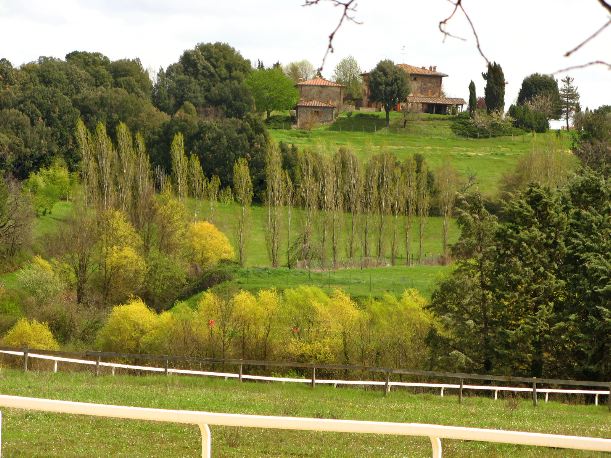
However, this is about as far as we got from Monticiano:
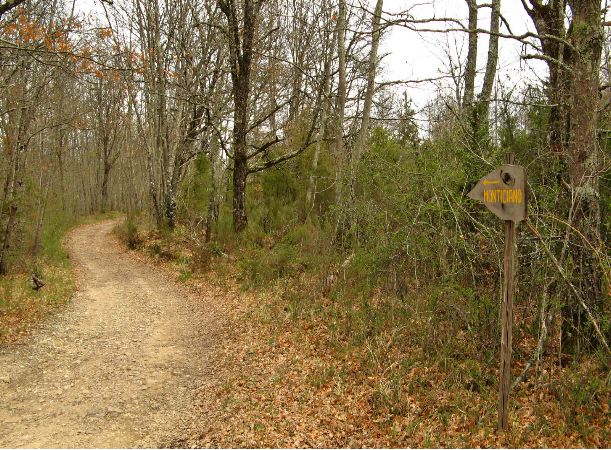
... for just ahead, around the corner, was “trouble in river city”:
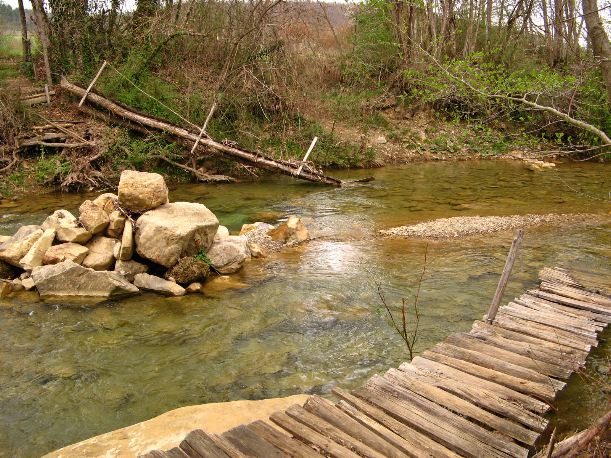
With no other way across and not particularly wanting to go barefoot, we returned the way we came. Too bad --- we could see the “unreachable” chapel across the river:
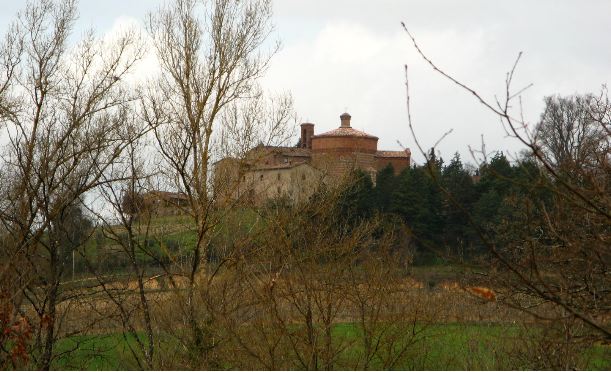
Driving back to Montalcino by a route new to us, we consoled ourselves with delightful scenery:
